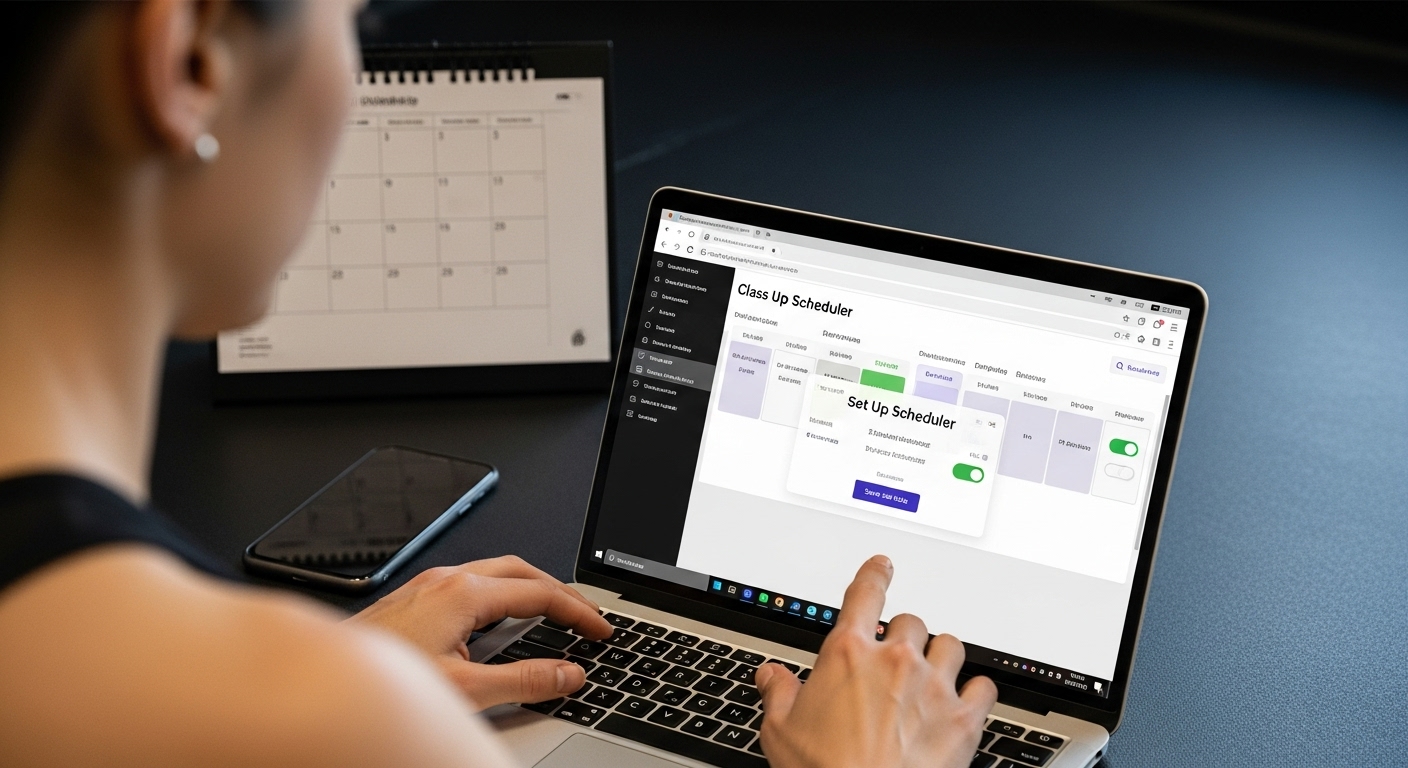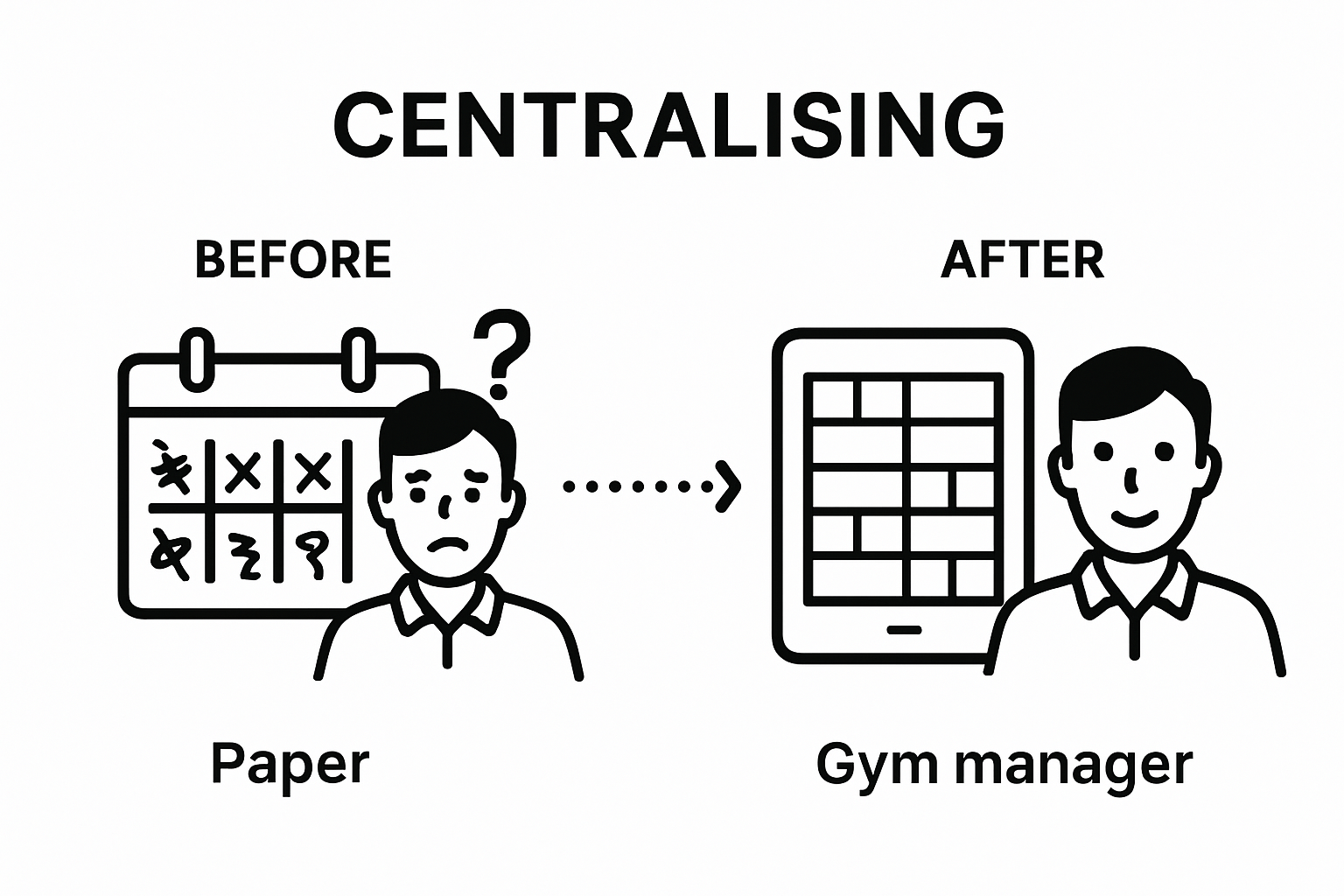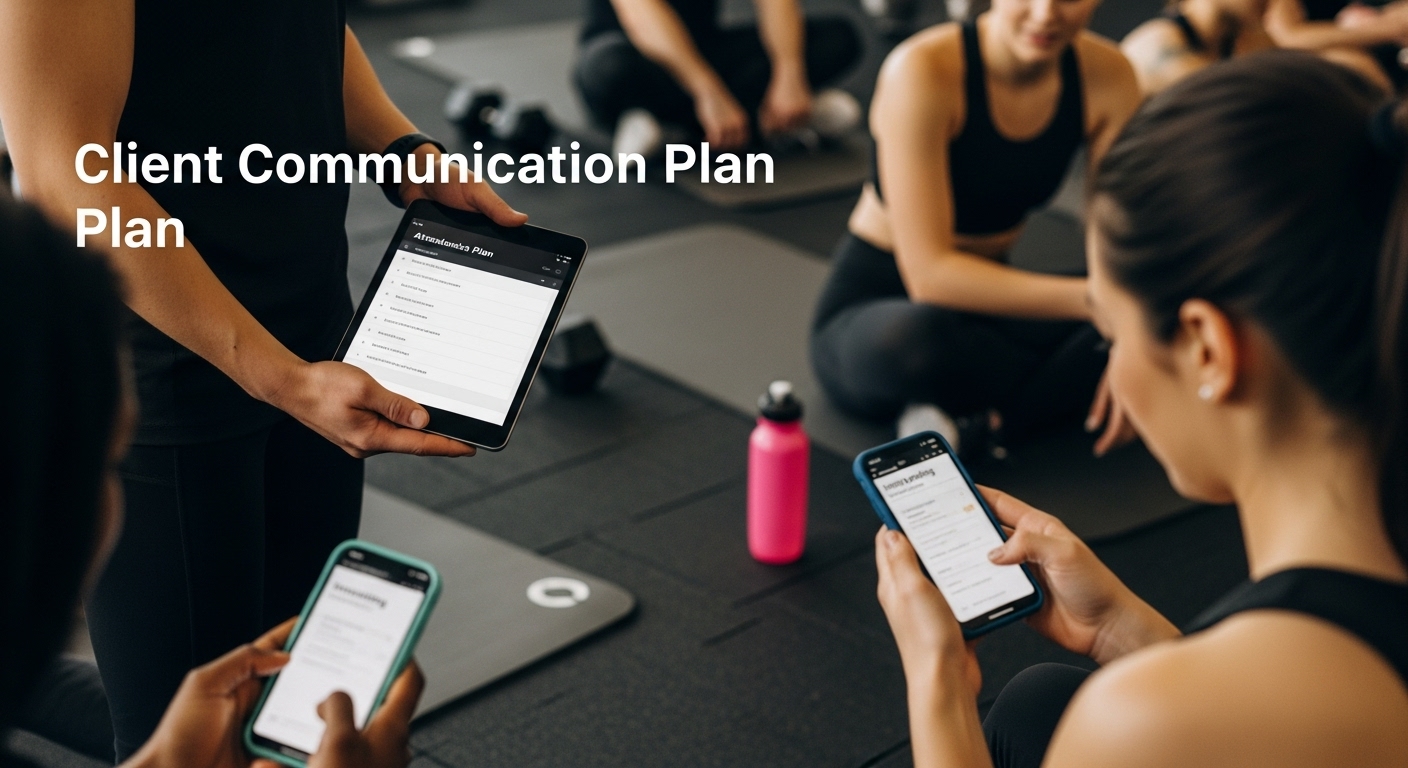Online scheduling is changing the way fitness instructors run their businesses. Studies show digital scheduling systems can significantly reduce appointment no-shows and save hours each week on admin tasks. Most expect the hardest part is moving everything onto a new system, fearing a tech nightmare. Surprisingly, switching to online scheduling is often the easiest decision a fitness professional can make and makes running classes feel effortless.
Table of Contents
- Understanding Online Scheduling And Its Benefits
- The Importance Of Flexibility In Class Management
- Enhancing Client Engagement Through Convenience
- Streamlining Administrative Tasks For Instructors
- Real-World Success Stories In The Fitness Industry
Quick Summary
| Takeaway | Explanation |
|---|---|
| Embrace online scheduling tools | These platforms automate bookings, improving time management and client interactions for fitness professionals. |
| Enhance client engagement through convenience | Prioritising user experience boosts satisfaction and retention through personalised scheduling options. |
| Utilise flexible class management strategies | Adapting schedules and offerings based on client needs enhances overall attendance and satisfaction. |
| Streamline administrative tasks with automation | Automating routine processes increases efficiency, allowing instructors to focus more on client training. |
| Leverage analytics for business growth | Digital platforms provide insights that can help fitness professionals scale their operations effectively. |
Understanding Online Scheduling and Its Benefits
Online scheduling represents a transformative digital solution enabling fitness instructors to manage client appointments, classes, and bookings through automated web platforms. Unlike traditional manual booking methods, these systems provide comprehensive digital infrastructure that streamlines administrative processes and enhances client interaction.
The Core Mechanics of Digital Booking Systems
At its fundamental level, online scheduling functions as a sophisticated digital calendar and reservation management tool.
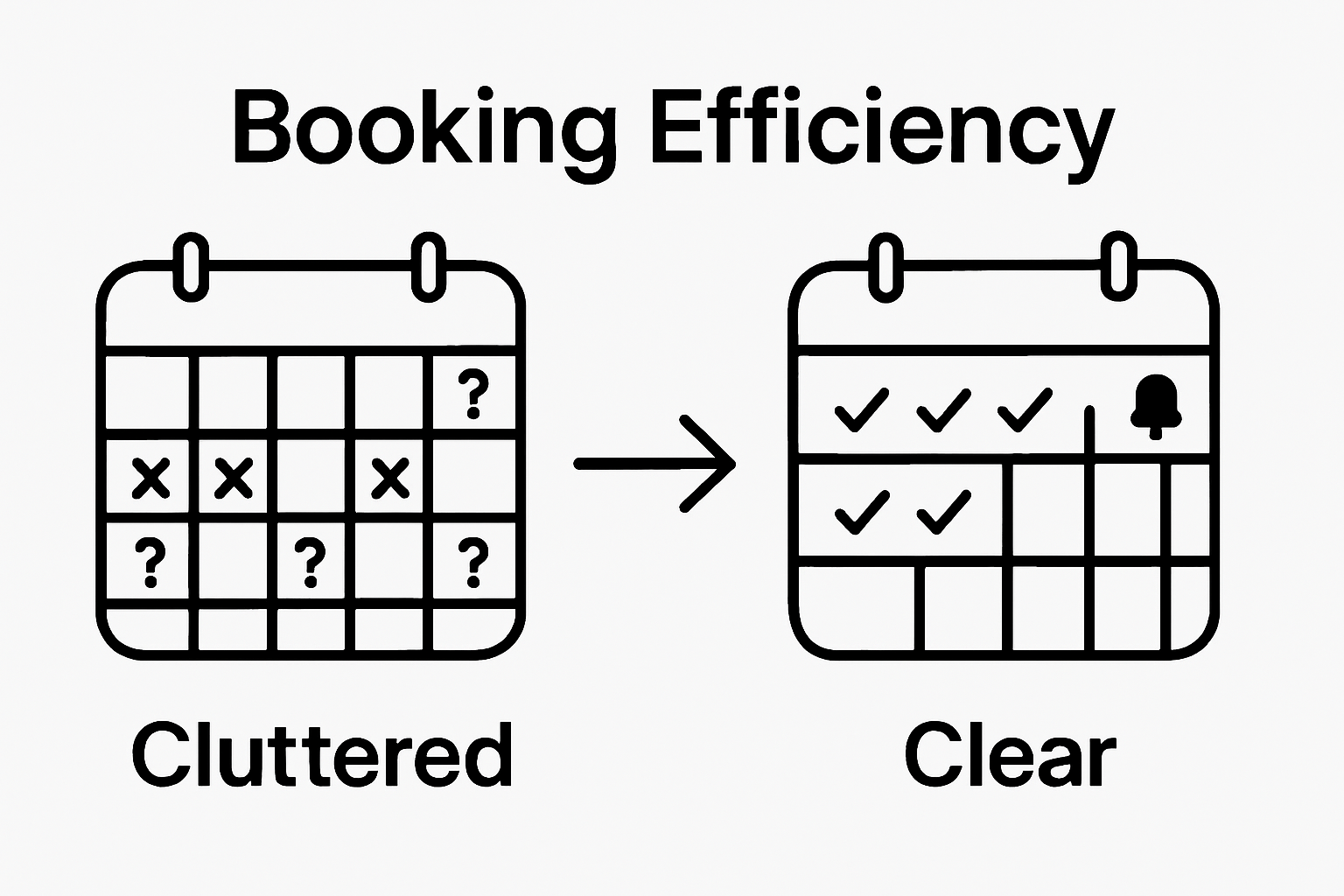 Research from the National Institutes of Health demonstrates that digital scheduling systems significantly reduce appointment no-shows and improve overall time management for service providers.
Research from the National Institutes of Health demonstrates that digital scheduling systems significantly reduce appointment no-shows and improve overall time management for service providers.
Key components of online scheduling platforms typically include:
- Integrated calendars with real-time availability tracking
- Automatic client notification and reminder systems
- Secure payment processing capabilities
- Client profile and history management
- Multi-device accessibility
Benefits Beyond Basic Booking
Digital scheduling transcends mere appointment management. These platforms offer fitness instructors powerful tools to professionalise their business operations. By automating administrative tasks, instructors can dedicate more energy to actual training and client engagement.
The advantages extend far beyond convenience. Online scheduling empowers fitness professionals to:
- Create standardised booking experiences
- Implement professional payment workflows
- Reduce manual administrative overhead
- Provide 24/7 client booking accessibility
- Generate detailed performance analytics
Modern online scheduling solutions recognise that fitness instruction is not just about managing time, but about creating seamless, professional client experiences.
To clarify the primary advantages digital scheduling tools offer over traditional manual methods, the following table highlights key features and improvements mentioned in this article.
| Feature/Benefit | Traditional Manual Methods | Online Scheduling Platforms |
|---|---|---|
| Appointment Booking Accessibility | Limited to working hours, slower | 24/7 access, instant confirmation |
| Administrative Effort | High, repetitive manual work | Automated, minimal manual input |
| Client No-show Management | Reliant on manual reminders | Automated reminders, reduced no-shows |
| Payment Processing | Often cash or separate systems | Secure, integrated online payment |
| Schedule Adaptability | Difficult and slow to update | Real-time dynamic adjustments |
| Analytics and Reporting | Manual, limited scope | Automated, detailed analytics |
| Personalisation and Interaction | Basic, not easily scalable | Personalised communications, scalable |
| By integrating smart technology, instructors transform their business from reactive appointment management to proactive client relationship development. |
The Importance of Flexibility in Class Management
Flexibility in class management represents a critical strategy for fitness instructors seeking to optimise their teaching approach and client engagement. Modern digital platforms enable unprecedented adaptability in scheduling, pricing, and client interactions, transforming traditional rigid training models into dynamic, responsive systems.
Dynamic Scheduling and Client Adaptation
Research on sport event management indicates that adaptable scheduling directly correlates with improved client retention and satisfaction. Flexible class management allows instructors to quickly respond to changing client needs, unexpected circumstances, and evolving fitness trends.
Key aspects of scheduling flexibility include:
- Real-time class capacity adjustments
- Instant waitlist and substitute management
- Personalised make-up class options
- Dynamic pricing for different class types
- Multi-format class delivery (online and in-person)
Empowering Client and Instructor Experiences
Beyond administrative convenience, flexible class management creates a more personalised fitness journey. By offering multiple class formats, time slots, and participation modes, instructors can cater to diverse client schedules, fitness levels, and personal preferences.
The strategic benefits of flexible management extend to:
- Reducing client dropout rates
- Increasing overall class attendance
- Supporting clients with unpredictable schedules
- Creating more inclusive fitness environments
- Maximising instructor revenue potential
Ultimately, flexibility transforms fitness instruction from a rigid, one-size-fits-all model to a responsive, client-centric approach that adapts to individual needs and lifestyle constraints.

Enhancing Client Engagement Through Convenience
Client engagement is fundamentally transformed by digital scheduling technologies that prioritise user experience and accessibility. Modern fitness platforms recognise that convenience is not just a feature, but a critical driver of sustained client participation and loyalty.
The Psychology of Digital Convenience
Research in digital health engagement demonstrates that reducing booking friction dramatically increases client interaction and commitment. Convenient digital platforms eliminate traditional barriers like phone bookings, complex registration processes, and limited communication channels.
Key psychological factors driving digital convenience include:
- Immediate gratification of booking needs
- Reduced cognitive load during scheduling
- Enhanced sense of personal control
- Minimised time investment in administrative tasks
- Seamless integration with personal digital ecosystems
Creating Personalised Interaction Pathways
Convenience goes beyond simple booking mechanisms. Fitness instructors can leverage digital tools to create nuanced, personalised client experiences that feel intuitive and responsive. By understanding individual client preferences, schedules, and fitness goals, instructors transform scheduling from a transactional process to a relationship-building opportunity.
Strategic convenience features that boost engagement include:
- Customisable class recommendations
- Automated progress tracking
- Personalised communication channels
- Flexible rescheduling options
- Integrated fitness goal setting
Ultimately, convenience in digital fitness platforms is about creating frictionless experiences that make client participation feel effortless, enjoyable, and aligned with individual lifestyle needs. By prioritising user-centric design, fitness instructors can build stronger, more loyal client relationships.
Streamlining Administrative Tasks for Instructors
Administrative tasks represent a significant time investment for fitness instructors, often distracting from core teaching responsibilities. Digital scheduling platforms fundamentally transform these operational challenges by introducing comprehensive automation and intelligent management systems.
Automating Routine Management Processes
Research in communication technology demonstrates that systematic automation reduces administrative errors and increases overall operational efficiency. Digital scheduling tools enable instructors to eliminate repetitive manual tasks, freeing critical time and mental energy for client interaction and professional development.
Key administrative processes ripe for automation include:
- Client registration and onboarding
- Payment processing and financial tracking
- Attendance and class capacity management
- Automated client communication and reminders
- Performance and revenue reporting
Intelligent Workflow Optimization
Beyond simple task elimination, modern scheduling platforms offer sophisticated workflow management capabilities. These systems integrate multiple operational components, creating seamless, interconnected processes that adapt to an instructor’s unique business model.
Strategic workflow optimization delivers significant benefits such as:
- Reducing time spent on manual recordkeeping
- Minimising administrative overhead costs
- Generating real-time business performance insights
- Enabling more personalised client management
- Supporting scalable business growth
Ultimately, streamlined administrative processes transform fitness instruction from a manually intensive profession to an efficiently managed, technology-enabled service model.
Real-World Success Stories in the Fitness Industry
Digital scheduling technologies have revolutionised how fitness professionals approach business management, providing tangible evidence of transformative potential across diverse fitness disciplines. These real-world narratives demonstrate the profound impact of technological integration on instructor success and client engagement.
Independent Instructor Transformation
Research on entrepreneurial technology adoption highlights how digital tools enable small-scale fitness professionals to compete effectively with larger establishments. Independent instructors have discovered that smart scheduling platforms can dramatically enhance their operational capabilities and business growth potential.
Key success characteristics for independent instructors include:
- Simplified business administrative processes
- Enhanced client communication strategies
- More efficient time and resource management
- Increased revenue through streamlined booking
- Professional brand positioning
Scaling Beyond Traditional Limitations
Digital scheduling represents more than technological convenience it is a strategic enabler for fitness professionals seeking sustainable business models. These platforms allow instructors to transcend geographical constraints, offering flexible class formats and expanding potential client bases beyond traditional physical limitations.
Strategic scaling opportunities encompass:
- Developing hybrid online and offline class models
- Creating membership-based recurring revenue streams
- Implementing personalised client engagement strategies
- Generating comprehensive performance analytics
- Building robust digital brand presence
Ultimately, success stories demonstrate that embracing digital scheduling is not just about technological adoption, but about reimagining fitness instruction as a dynamic, client-centric professional service.
This table summarises the principal factors driving the success of independent fitness instructors and those scaling their businesses, as detailed in the success stories section.
| Aspect | Independent Instructors | Scaling Beyond Traditional Limitations |
|---|---|---|
| Business Process Efficiency | Simplified admin, efficient time management | Automated, supports higher client volumes |
| Client Communication | Enhanced, personalised engagement | Multi-channel, supports broader reach |
| Revenue Opportunities | Increased via streamlined booking | Recurring memberships, diverse revenue streams |
| Operational Flexibility | Adaptability for solo business models | Hybrid formats, caters to varied client bases |
| Brand and Market Impact | Improved professionalism, competitive edge | Expanded digital presence beyond local geography |
Unlock Effortless Class Management with Classta
Are you ready to leave behind manual bookings and constant schedule juggling? The article shines a light on the struggle many fitness instructors face when managing appointments, payments, and attendance across multiple channels. You deserve tools that help you automate the headaches of admin work and put the focus back on your classes, your growth, and your clients. Imagine a branded, all-in-one platform that handles everything from customised calendars and real-time bookings to secure payments and frictionless membership management.
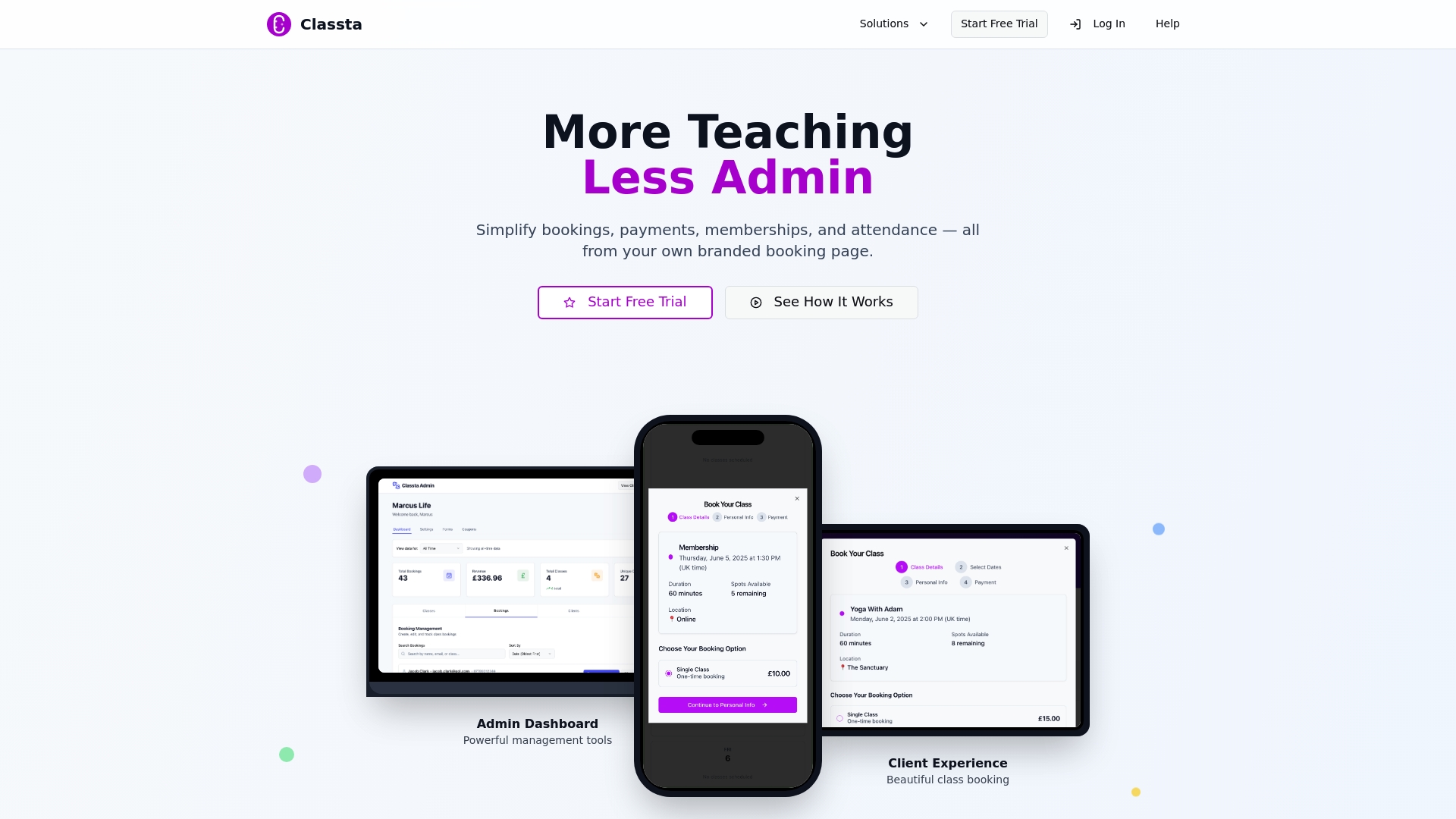
Take control of your fitness business today with Classta.co. Let our purpose-built platform bring the benefits of online scheduling and automation to your daily operations. Experience smart reminders, simple payment processing, and AI-powered growth tools, all inside a user-friendly space crafted for instructors like you. Visit Classta.co now to see how effortless client management can transform your business. Your future success is just a click away—start building a more flexible and profitable studio experience today.
Frequently Asked Questions
What are the primary benefits of using online scheduling for fitness instructors?
Online scheduling streamlines appointment management, automates administrative tasks, provides 24/7 client accessibility, and enhances client engagement through convenient booking options.
How does online scheduling improve client retention?
Flexible scheduling allows fitness instructors to adapt to changing client needs and preferences, leading to higher satisfaction and reduced dropout rates.
Can online scheduling systems integrate with other tools?
Yes, many online scheduling platforms offer integration with payment processing systems, client management tools, and marketing solutions to optimise overall business operations.
What features should I look for in a digital scheduling platform?
Key features to consider include real-time availability tracking, automated client notifications, secure payment processing, client profile management, and multi-device accessibility.

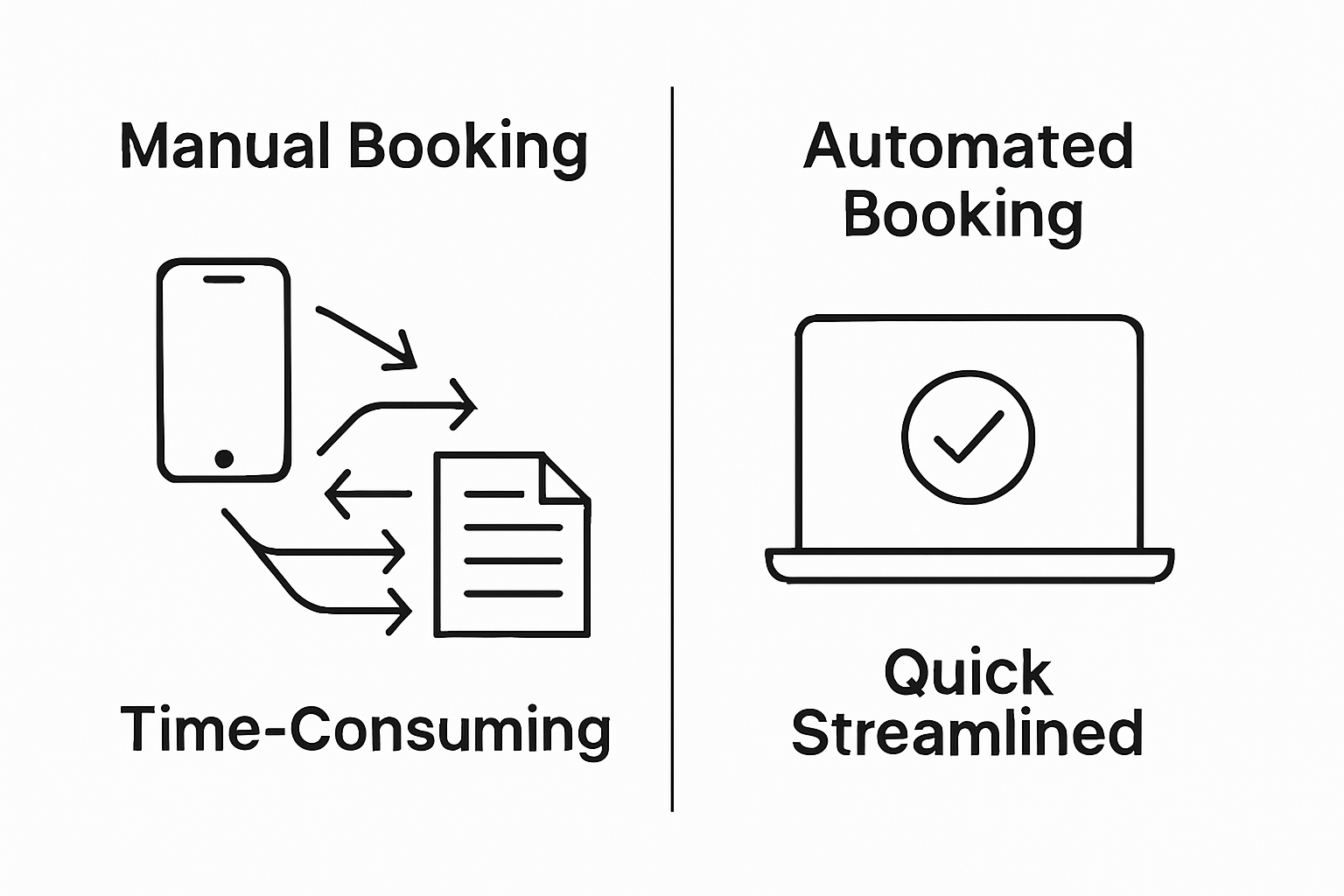
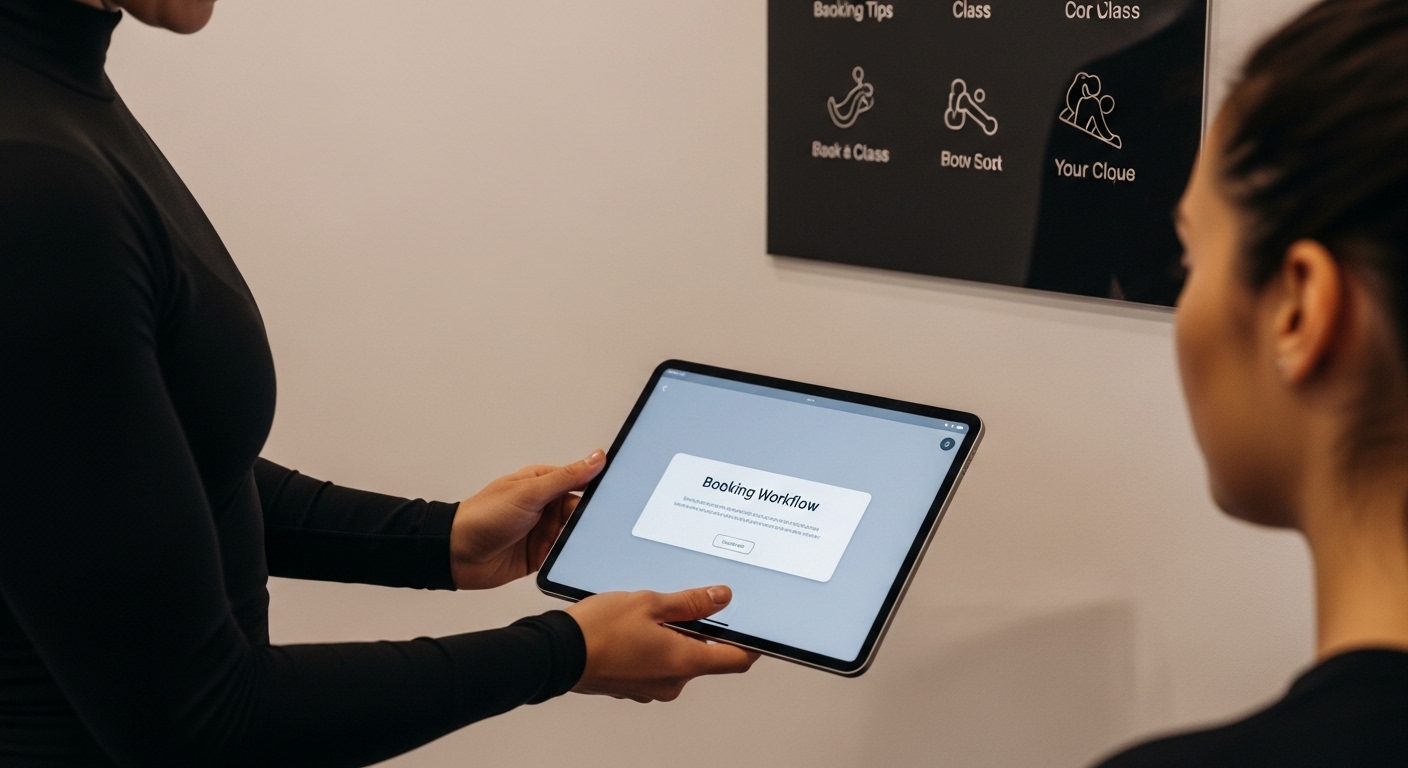
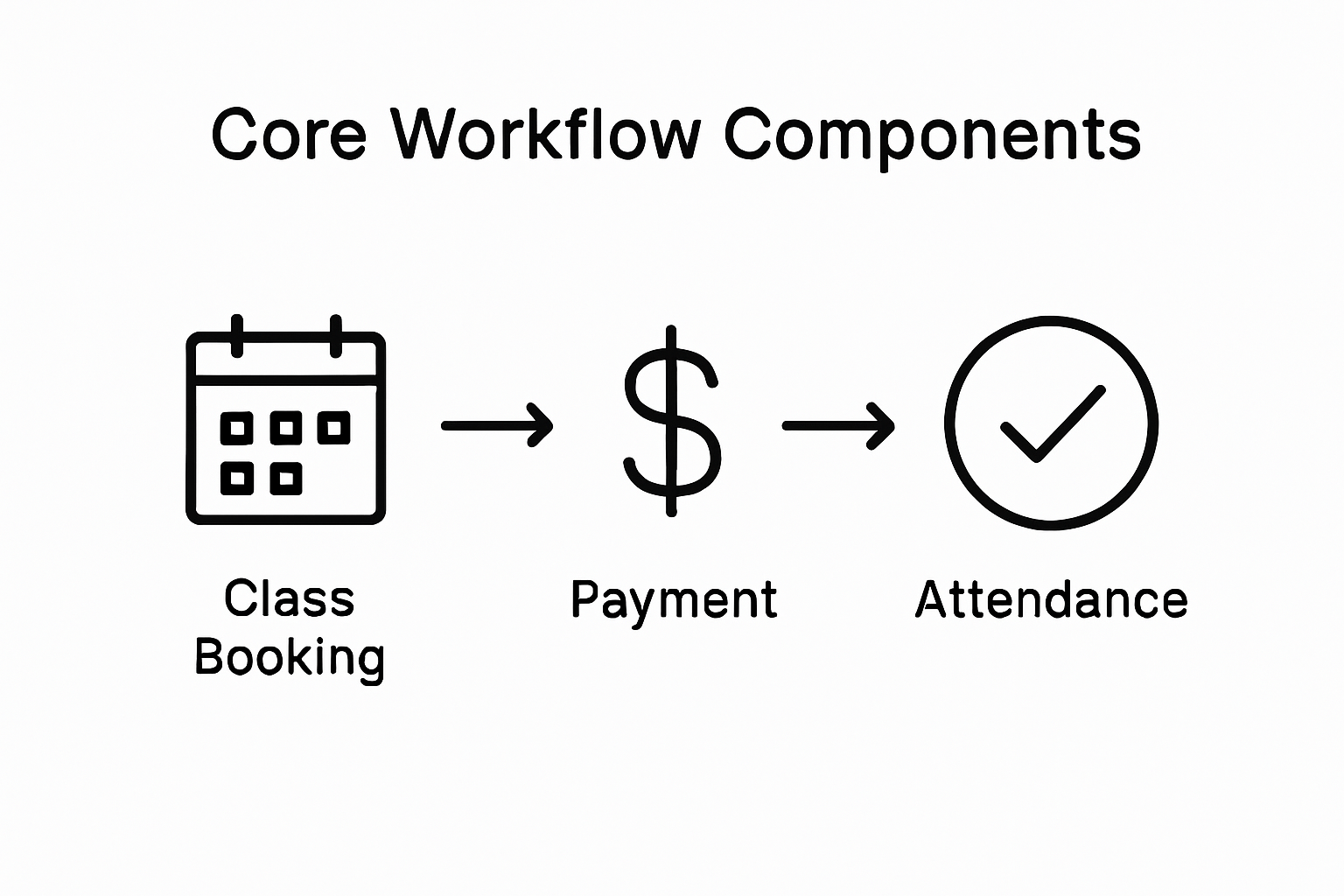

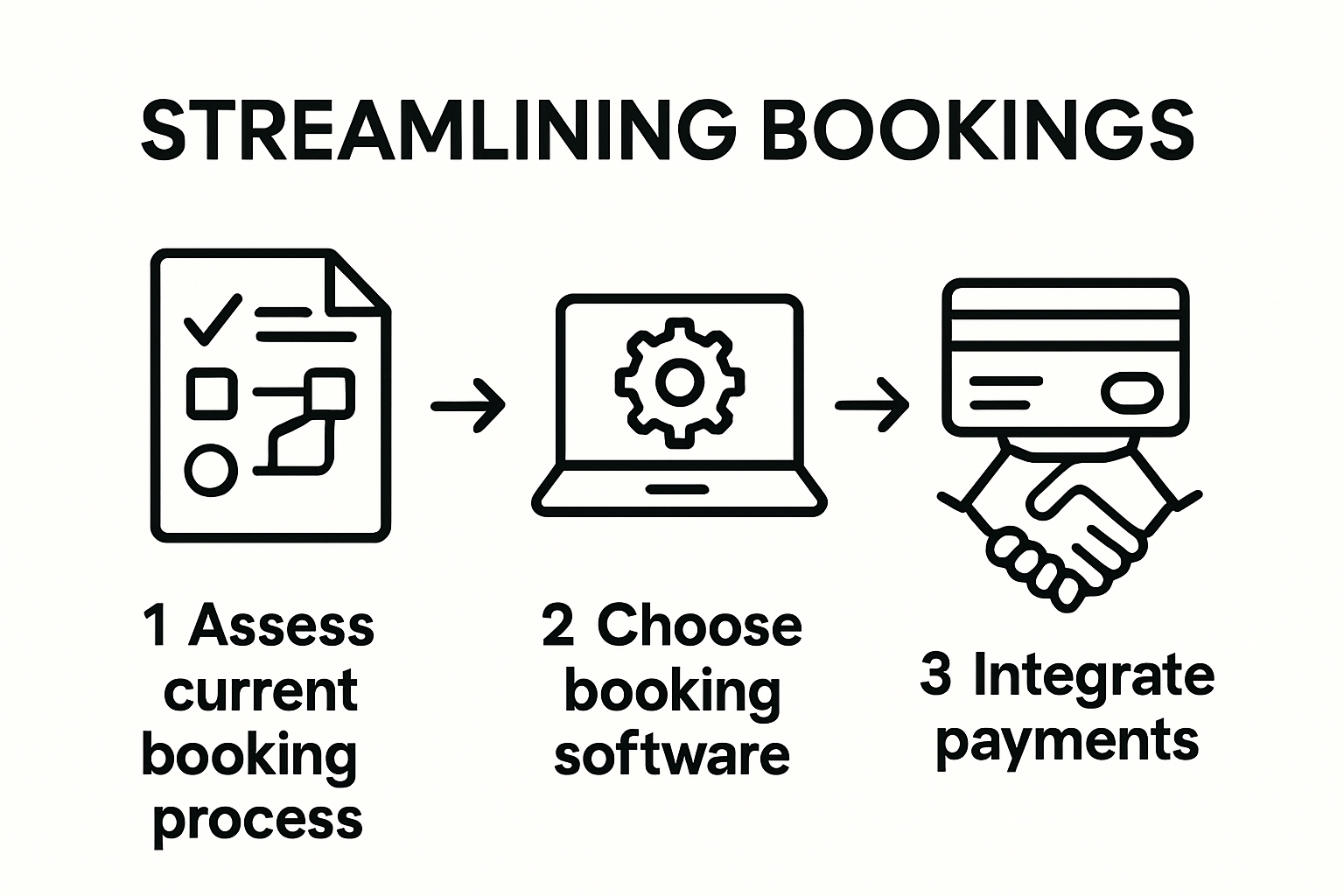
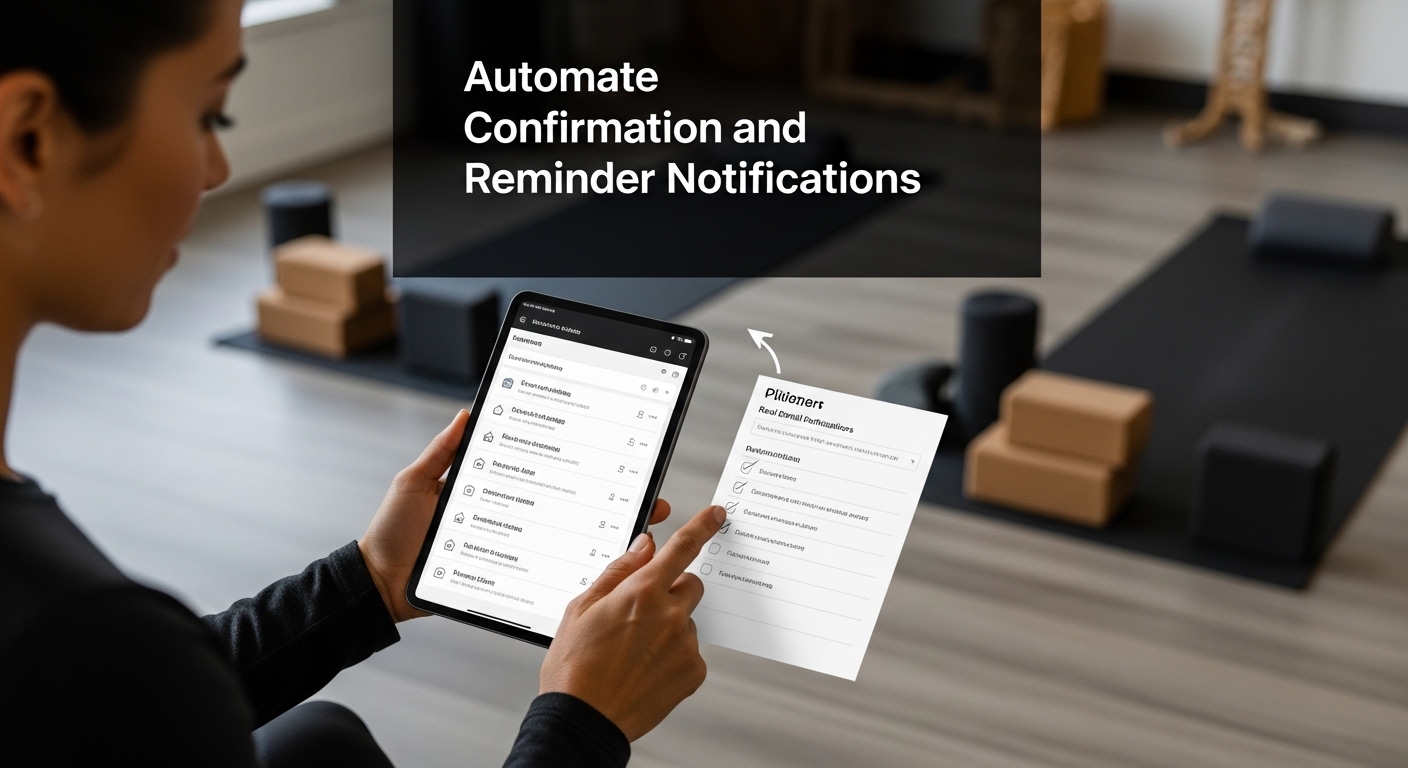
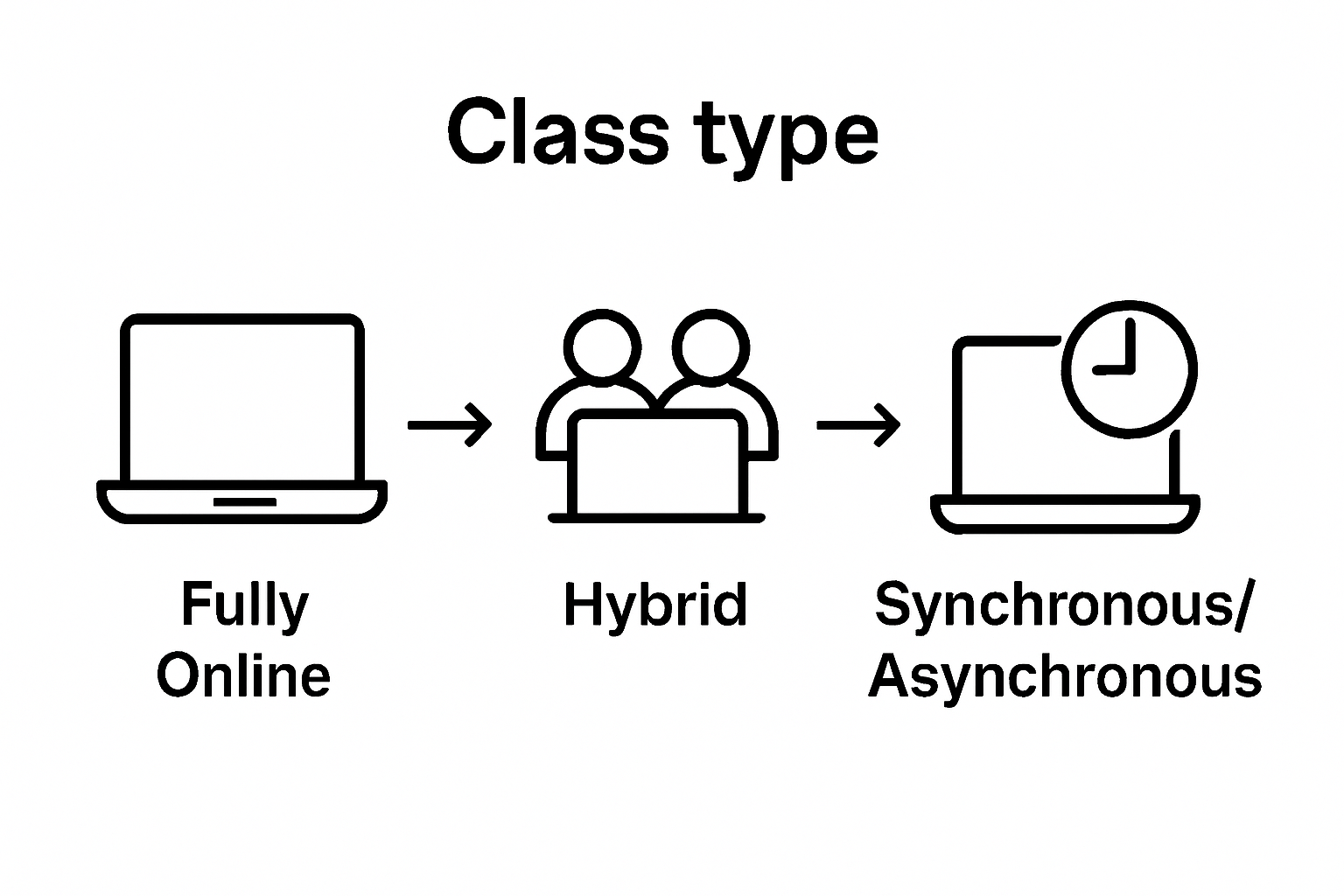 :
:
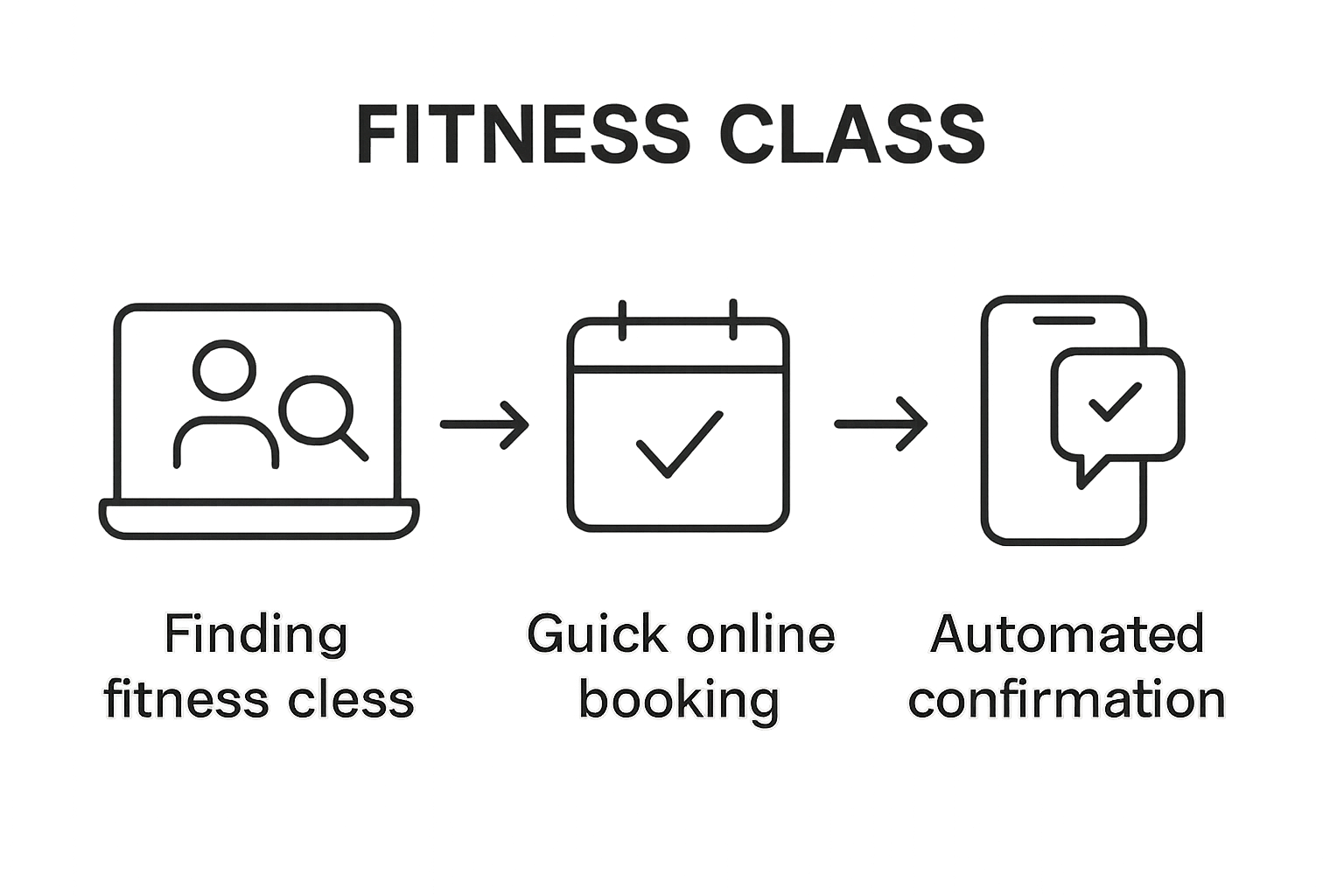 This foundational knowledge will guide your strategy for implementing a more streamlined and efficient booking system that saves time and enhances client experience.
This foundational knowledge will guide your strategy for implementing a more streamlined and efficient booking system that saves time and enhances client experience.